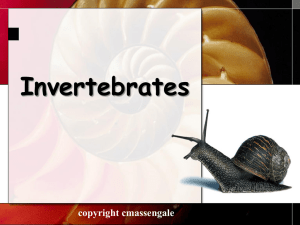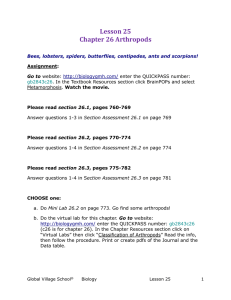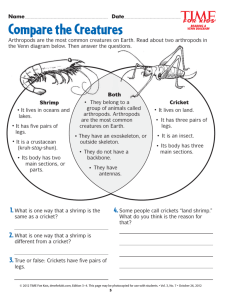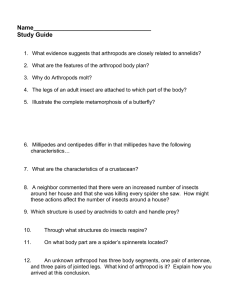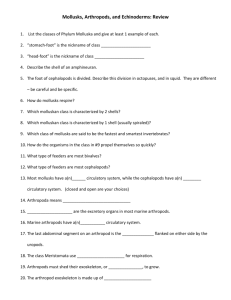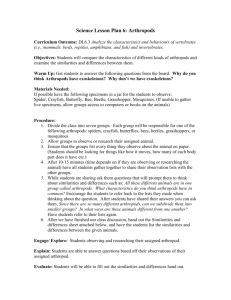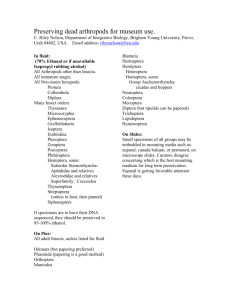Arthropods Lesson Plan: Elementary Science
advertisement
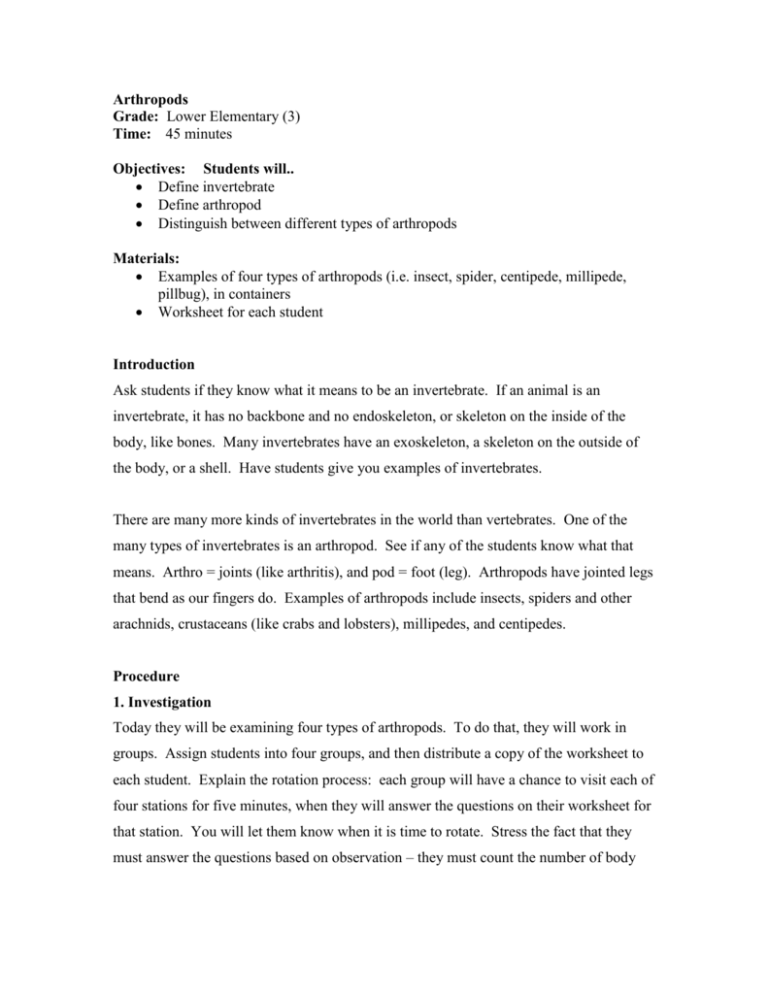
Arthropods Grade: Lower Elementary (3) Time: 45 minutes Objectives: Students will.. Define invertebrate Define arthropod Distinguish between different types of arthropods Materials: Examples of four types of arthropods (i.e. insect, spider, centipede, millipede, pillbug), in containers Worksheet for each student Introduction Ask students if they know what it means to be an invertebrate. If an animal is an invertebrate, it has no backbone and no endoskeleton, or skeleton on the inside of the body, like bones. Many invertebrates have an exoskeleton, a skeleton on the outside of the body, or a shell. Have students give you examples of invertebrates. There are many more kinds of invertebrates in the world than vertebrates. One of the many types of invertebrates is an arthropod. See if any of the students know what that means. Arthro = joints (like arthritis), and pod = foot (leg). Arthropods have jointed legs that bend as our fingers do. Examples of arthropods include insects, spiders and other arachnids, crustaceans (like crabs and lobsters), millipedes, and centipedes. Procedure 1. Investigation Today they will be examining four types of arthropods. To do that, they will work in groups. Assign students into four groups, and then distribute a copy of the worksheet to each student. Explain the rotation process: each group will have a chance to visit each of four stations for five minutes, when they will answer the questions on their worksheet for that station. You will let them know when it is time to rotate. Stress the fact that they must answer the questions based on observation – they must count the number of body segments, for example. They cannot assume they know the answer based on what they think the animal is. Put the animals at the stations and begin rotations. After the groups have visited all stations, bring the class together to discuss their findings. Ask for the number of body segments, legs, antennae, etc., and draw them on the board as you receive the correct answer, so that you have a complete animal for each station. Label the important parts, and name the type of animal. Type of arthropod Insect Arachnid (i.e. spider) Millipede Centipede Crustacean (i.e. pillbug) Number of body segments 3 (head, thorax, abdomen) 2 (head, cephalothorax) Many, depends on species Many, depends on species Number of legs Arrangement of legs Antennae 6 9 14 On thorax on cephalothorax 2 pair per segment 1 pair per segment 1 pair on each of 7 segments 8 Many Many Yes No Yes Yes Yes (2 pair) Other 2 pairs of wings Pedipalps near mouth Rounded body Flattened body Conclusion Verbally review with students the characteristics of the different types of arthropods. Present them with a new animal in one of the groups and ask them to figure out what it is.
